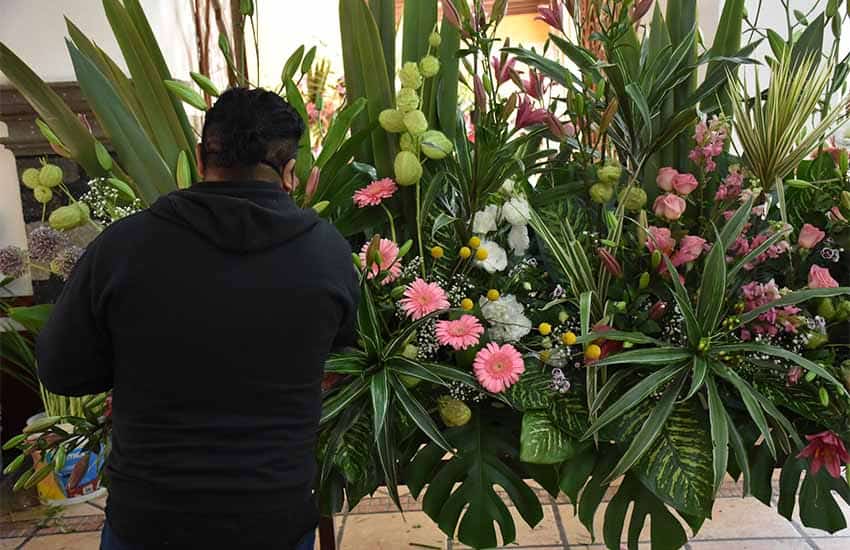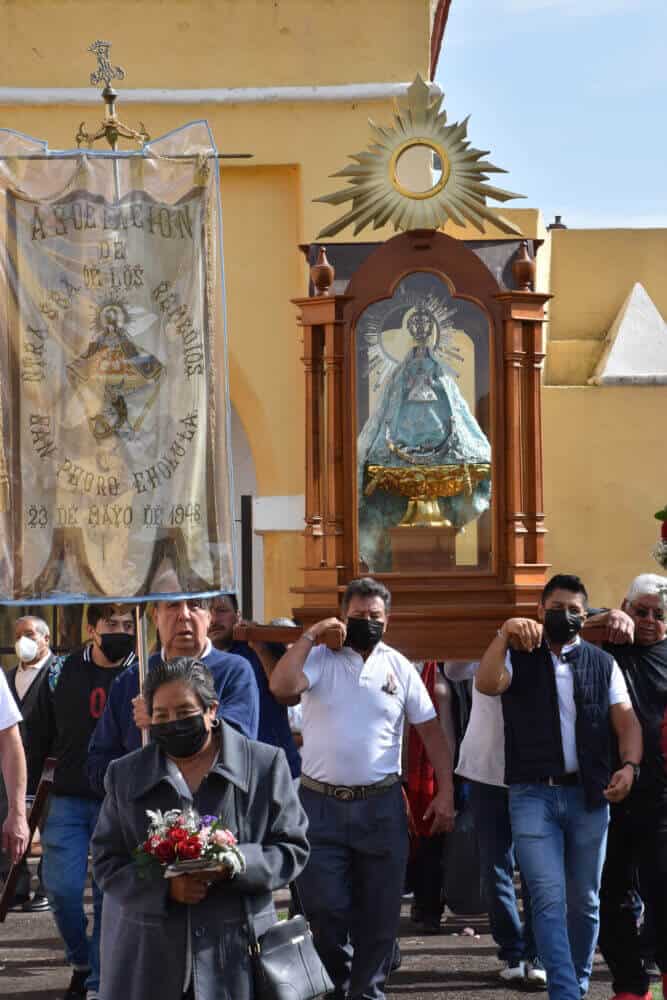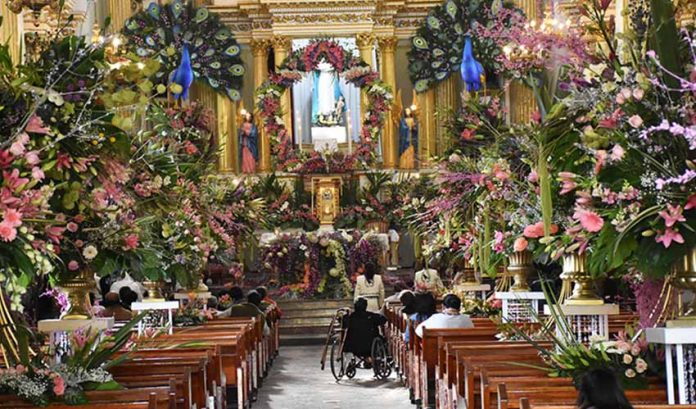In a back room of a former monastery in San Pedro Cholula, Puebla, a couple of dozen people were working intently on flower arrangements that would soon fill the church for the Fiesta de Floricultores (Floriculturist Festival), an event that’s taken place in Cholula for over 100 years.
Most of these people come from San Pedro Mexicaltzingo and San Pablo Tecamac, two of Cholula’s neighborhoods.
“This is one of the most important events for the barrios,” said Diego Percino Mancilla. “The two barrios are in charge and organize the event, but other barrios come to help.”
“The two barrios are dedicated to selling flowers,” explained John O’Leary, a local photographer who has documented fiestas and daily life in Cholula for 52 years. “One hundred years ago, most of the people in the two barrios grew flowers. Now, few do.”
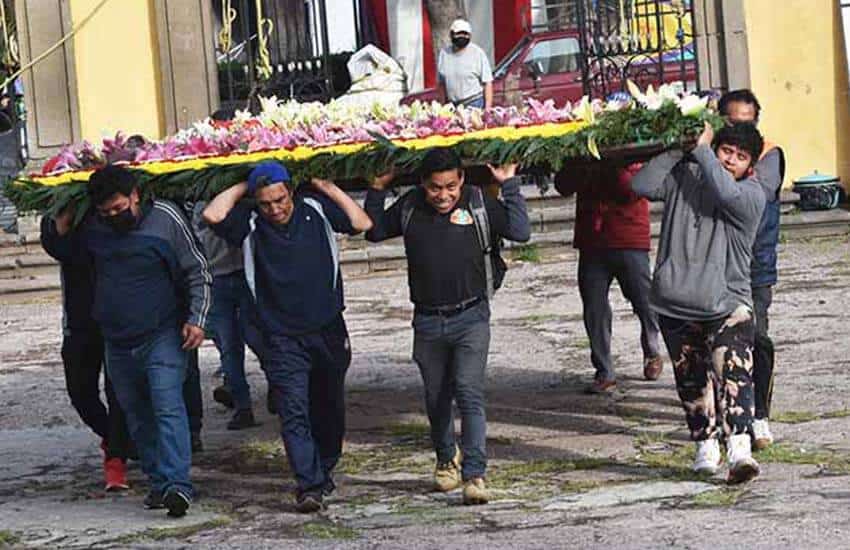
But many people still make floral arrangements.
The Fiesta de Floricultores was first celebrated in 1900. “This [fiesta] is to give thanks to God and to the Virgin of the Remedios,” said Rolando Percino Toxqui, one of the event’s organizers who has been participating since 1980.
Work on the floral arrangements started on Saturday, June 11. “People worked 15 hours on Saturday,” said Percino Mancilla, “and 18 on Sunday. We worked partway through the night.”
As a band played “The Man on the Flying Trapeze,” workmen struggled to place the top part of the arrangement that adorned the door.
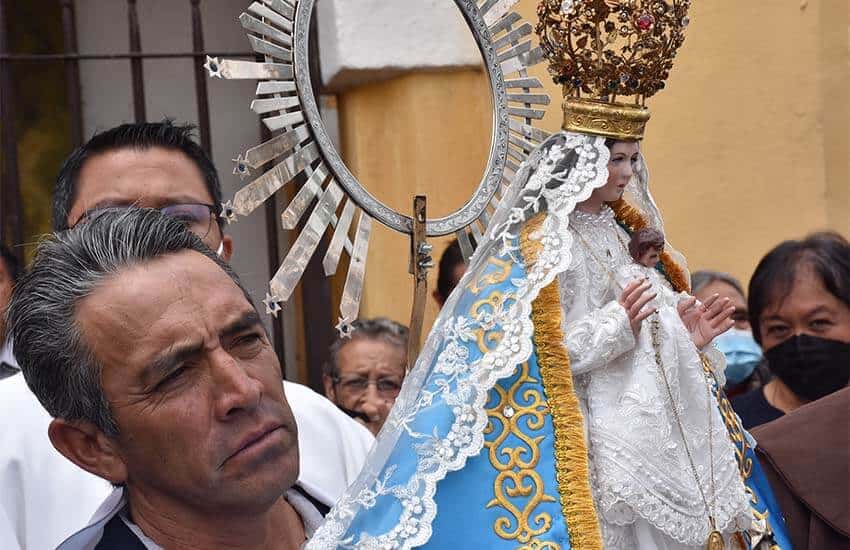
According to Felix Mones, a member of the Hermandad de Cargadores (The Brotherhood of the Carriers) — the group responsible for carrying figures of the Virgin and other various saints — the piece weighs 400 kilos (880 pounds).
The Virgen de los Remedios is one of the most revered images in Mexico. In Cholula, a figure of the Virgin is usually kept inside the Iglesia de Nuestra Señora de los Remedios, the church that sits atop Tlachihualtepetl, the Great Pyramid. On Monday, June 13, the figure was carried in procession to the monastery where a mass was first held in the Capilla de Naturales (one of the chapels) before it was installed in the monastery.
On Monday, the brotherhood carried the figure in procession from the church to the monastery, the Convento de San Gabriel. A mass was held in one of the capillas (chapels) there before the figure was installed.
A second, longer mass was held in the monastery itself. Then the figure was once again displayed in procession around the atrium, trailed by several hundred people.
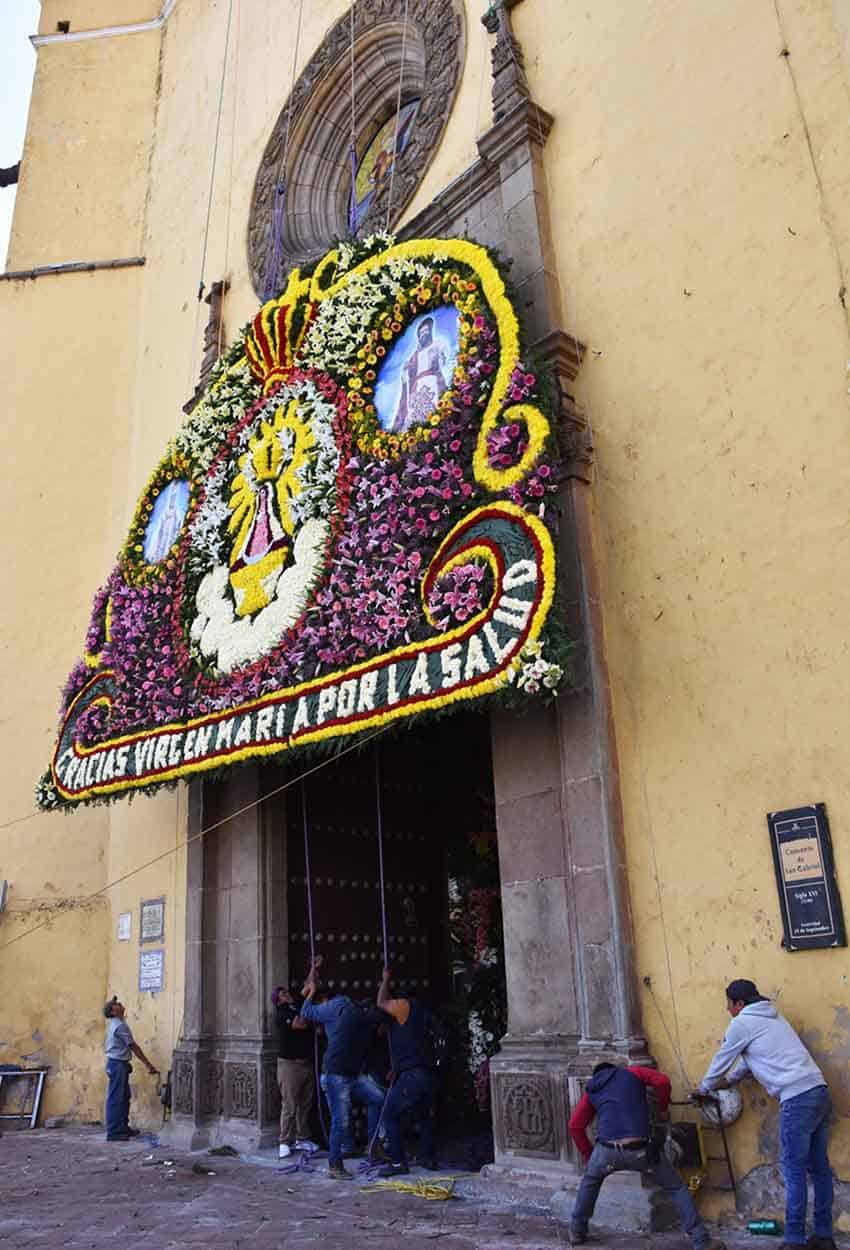
Stops were made at each of the four capillas, where people crowded around the figure, some reaching out to touch it. After each stop, a different cargador helped carry the figure.
“To be chosen to carry the statue from one capilla to the next, a person has to be a member of the cargadores and be chosen by the mayordomo in charge of the event,” said Tim Knab, an anthropologist at the University of the Americas in Puebla (UDLAP). “It’s an honor to be chosen.”
After the procession, the figure was returned to the monastery, where it will stay for several days before returning to the Santuario de La Virgen de los Remedios.
The fiesta is a major undertaking.
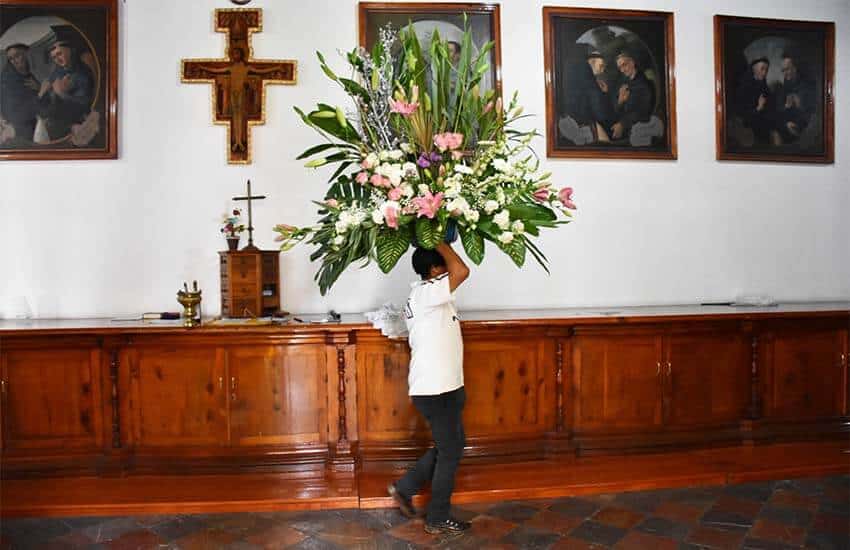
“There are very few who commit to this,” said Percino Toxqui. “It is much time and money. We do it because of our faith and our beliefs. It makes us happy to do this.”
Joseph Sorrentino, a writer, photographer and author of the book San Gregorio Atlapulco: Cosmvisiones and of Stinky Island Tales: Some Stories from an Italian-American Childhood, is a regular contributor to Mexico News Daily. More examples of his photographs and links to other articles may be found at www.sorrentinophotography.com He currently lives in Chipilo, Puebla.

